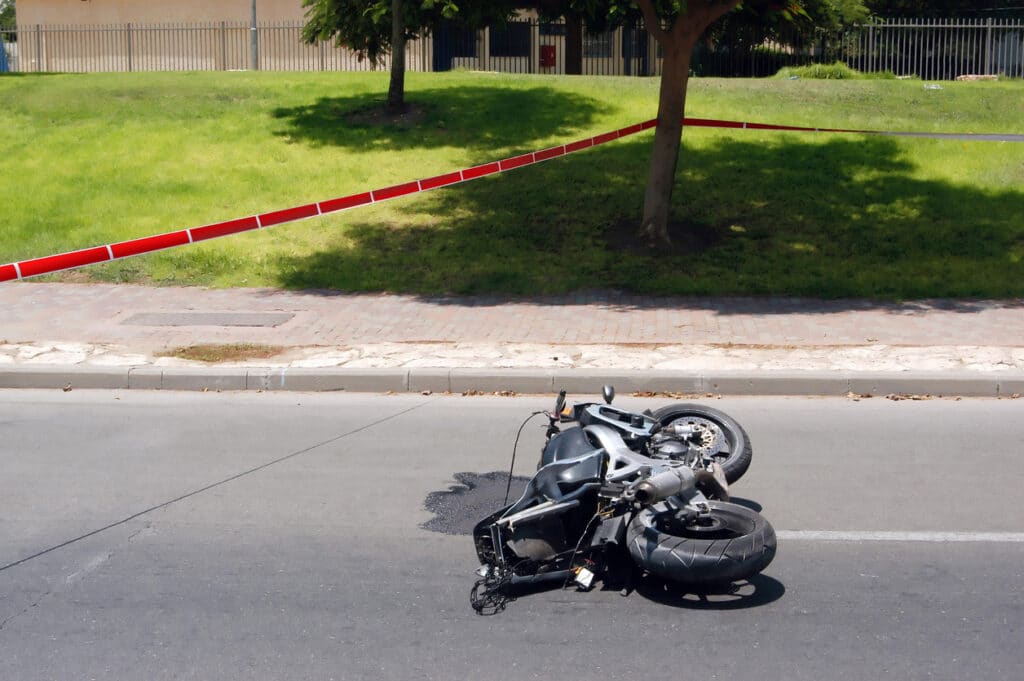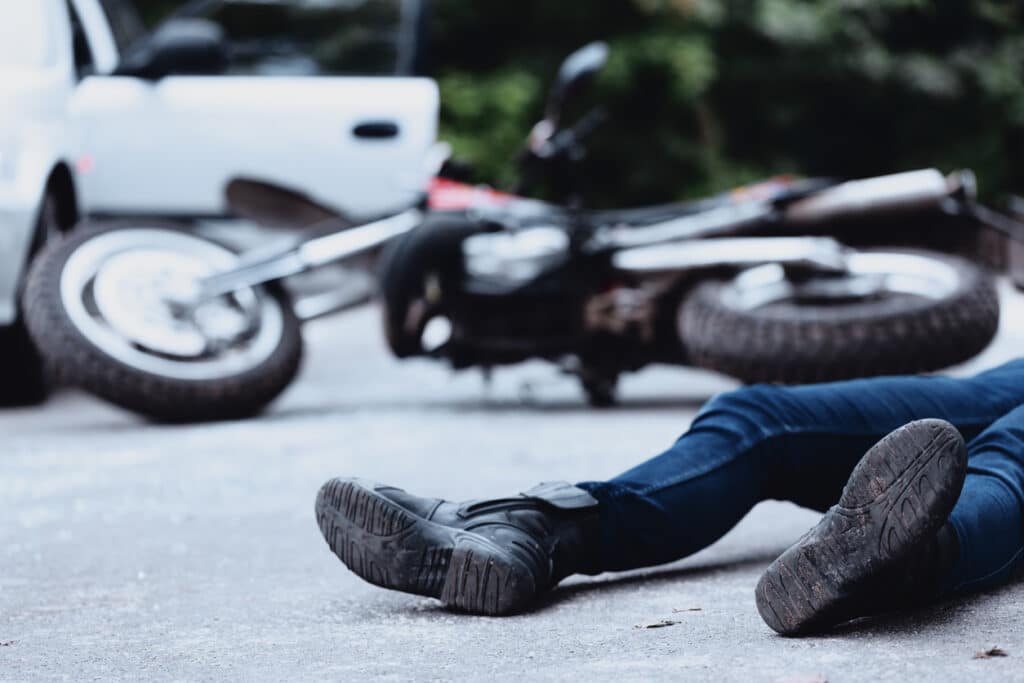Motorcycle accidents can occur in the blink of an eye before many riders have a chance to avoid them. Often, those accidents occur due to the negligence of other drivers.
How do the most common motorcycle accidents occur–and can you, as a biker, avoid them?
1. Errors at Intersections
The majority of motorcycle accidents, according to the National Highway Traffic Safety Administration, occur in intersections. Motorcycles present a smaller visual profile than larger passenger vehicles. As a result, many drivers of passenger vehicles may fail to notice the presence of a motorcycle in the intersection altogether. They may move quickly through the intersection, pausing only briefly or failing to stop at all. As a result, they may cause a t-bone accident or slam directly into a motorcycle.
As a motorcycle rider, you can decrease the risk of an accident in an intersection by paying careful attention to other vehicles around you. While you cannot eliminate accident risk entirely, you can decrease your risks by waiting to ensure that all cars come to a complete stop before proceeding through an intersection.
2. Alcohol-Related Accidents
Approximately 43% of fatal motorcycle accidents involve alcohol, either on the part of the motorcycle rider or on the part of the other driver. Unfortunately, alcohol consumption can quickly have a number of negative effects on the average driver. Drivers who drink and drive may have poor motor control, more trouble with vision and focus, and poor reflexes, which can slow response time in a motorcycle accident.
Never drink and drive, even on a motorcycle. If you suspect another driver of drinking and driving, move away from that driver as soon as possible. If possible, pull off the road and report dangerous driving behavior.
3. Distracted Drivers
Sensor data indicates that drivers may use their cell phones while in their vehicles an average 88% of the time. Unfortunately, this can substantially increase accident risk. The average driver distracted by his cell phone will have a hard time keeping track of the other cars around him, much less paying attention to a motorcycle. A distracted driver may substantially increase your risk of involvement in a sideswipe collision. Worse, you may find that a distracted driver will pull faster through an intersection or ignore safety precautions, including traffic lights and yield signs, due to that distraction.
Never engage in distracted behavior when driving your motorcycle. If you need to use your cell phone for any reason, including changing your music or checking a message, pull off the road instead. If you notice another driver behaving in a distracted manner, do your best to keep your motorcycle away from that vehicle.
4. Speeding
An average 33% of fatal motorcycle crashes included a speeding driver, compared to around 19% of fatal car accidents.
Motorcycle riders may face much greater temptation to speed. You can feel the wind whipping around you. You know that you can maneuver more quickly than a passenger vehicle at a high rate of speed. Unfortunately, as your speed increases, so does your accident risk—and your risk of severe injury if you are involved in an accident.
Slow down and adhere to the speed limits, even on clear days and on familiar roads. Weather does not play a significant role in the frequency of motorcycle accidents, since around 97% of motorcycle accidents occur during clear or cloudy weather, and only an average 2% take place in the rain. This could be, in part, because most riders prefer alternate forms of transportation in bad weather. Riders may, however, also be more likely to speed in good weather, increasing the risk of an accident.
5. Lane Splitting
In a traffic jam or tight traffic, motorcycle riders may attempt lane splitting: riding down the center line, between two lanes of traffic, instead of taking up an entire lane for the much narrower motorcycle. While this practice may help save you a little time, it is also illegal in most states. Only California has a law that explicitly allows lane splitting, though other states, including Washington and Oregon, are considering bills that would legalize the practice.
Legal or not, lane splitting can prove incredibly dangerous, since it leaves motorcycle riders with little room to maneuver if traffic does start moving again. Instead, protect yourself by waiting out tight traffic with other vehicles on the road.
Keeping Yourself Safer on Your Motorcycle: A Few Tips
While you cannot eliminate the risk of an accident entirely, there are several steps you can take to reduce your risk of serious injury when riding.
1. Keep an eye on other drivers around you.
Ideally, you would be able to assume that other drivers would specifically look out for you. Unfortunately, many drivers are often absorbed in their own thoughts or in their chosen distractions. As a result, they may have a much harder time noticing the presence of your motorcycle. Pay extra attention to other drivers around you and get out of the way any time you suspect dangerous behavior.
2. Stay out of other drivers’ blind spots.
The average minivan has a blind spot large enough to lose a small car. Big trucks may lose several vehicles inside their blind spots. Unfortunately, your smaller motorcycle may disappear even more easily.
Familiarize yourself with the blind spots of other vehicles, especially larger passenger vehicles. Make a habit of staying out of them where possible. If you must pass through a vehicle’s blind spot, do so smoothly, without hesitating, where possible. If you must linger in a vehicle’s blind spot, including in heavy traffic, consider slowing your rate of speed and dropping back to make your motorcycle more visible.
3. Get your motorcycle license.
As many as 26% of the motorcyclists involved in fatal accidents did not have their motorcycle license at the time of the accident. Countless more bikers may fill the roads without a valid motorcycle license. If you plan to ride, make sure your license is current and that you have insurance on your bike. Not only can this help protect you financially, many states require you to go through specific safety training to receive a motorcycle license. The knowledge from that training can help keep you safer.
4. Always follow the rules of the road.
Avoid speeding, lane splitting, and ignoring traffic signals. Even though your motorcycle is faster and more maneuverable, you still need to follow those important rules! Not only do they keep you safer in general, they can make your behavior more predictable to other drivers and help them avoid accidents.
5. Always wear safety gear.
Wearing a motorcycle helmet can decrease your risk of death by 37% and your risk of traumatic brain injury by 67%. Even if you do suffer injury to your face, head, or neck while wearing a helmet, it may prove less severe than if you suffered an injury without a helmet. You may also want to look into gloves or a protective suit to help protect you in an accident.
Knowing how to handle a motorcycle accident in Atlanta can provide you with the necessary steps to take in the aftermath. It’s also crucial to understand what to do after a motorcycle accident in Atlanta to ensure your safety and legal rights are protected. Additionally, being aware of the most common motorcycle accident injuries can help you prepare for potential outcomes and seek appropriate medical care.


